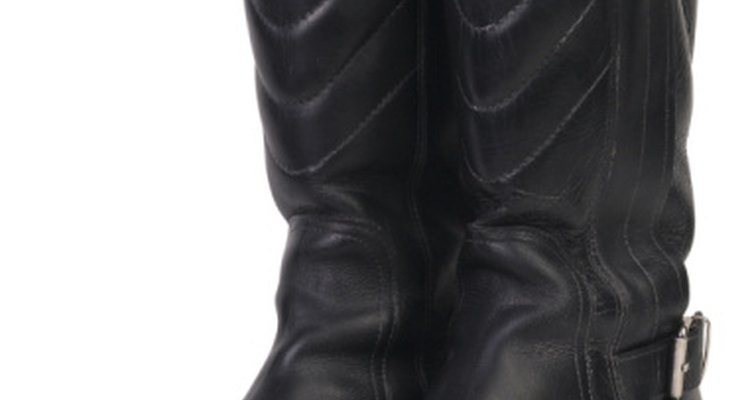
One of the most frightening images brought to mind by totalitarian regimes is that of mindless columns of soldiers marching in uniform with perfect syncopation. While the Nazi Wehrmacht was eager to leave a forceful impression with the details of its uniform, many aspects of military dress existed out of practical necessity. German "jackboots" were made with a similar pattern to that which armies of many nations had used for generations, but in the Nazi army they developed a frightening reputation.
German Jackboots of World War II
German soldiers in the Third Reich were issued Model 1939 marching boots. These boots came up to mid-calf, were constructed of brown leather and did not have laces. The term "jackboot" originally referred to reinforced cavalry boots but was later applied to a broader category. Despite being issued brown, Nazi troopers were required to maintain a black finish on their boots by applying bootblack in their free time.
German Marching Terms
The English word "jackboot" evolved without any specific reference to Germany or World War II. In their own language, German soldiers referred to their standard footwear as "Marschstiefel," a compound word meaning "marching boots." The word "Stiefel" would have been used, as it refers to boots in a more general sense. When parading about, Nazis did not use the term "goose-stepping." To march in a goose-step fashion is called, in German, "Stechmarschen," which literally means "to stab-march."
Jackboot Trim
To make the jackboots more durable, the hide leather soles were reinforced with round-headed tacks called "hobnails" nailed into them. The hobnails added to the theatrics of a marching German army by creating a sharp click sound when each boot hit the hard streets. Similarly, the boots had steel reinforcements around the heel that created a loud click when a soldier was ordered to come to attention.
Jackboots Outside of World War II
It must be remembered that the Nazi military used jackboots first and foremost for their simple design and durability. Jackboots have a long history that predates, and survives, their association with the horrors of World War II and fascist regimes. Jackboots were in use since at least the 1700s and they continue to be used by democratic nations in a multitude of settings, including the British Army's Household Cavalry.
Related Articles

The History of Steel Toe Boots
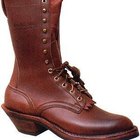
Definition of Packer Boots

About Code West Boots

What Are Moon Boots?

History of Military Hats

Children's Shoes in the 1950s

How to Prepare UGG Boots for First Time ...

The Difference Between Loafers & Boat ...
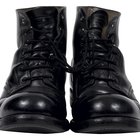
How to Treat Doc Martens With Mink Oil

The First Converse Shoe

What Did Men Wear in the '50s?

Zoot Suit vs. Victory Suit

The History of Converse Shoes

What Do Women Pirates Wear?

What Are Converse Shoes Made Out of ...
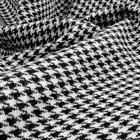
The History of Houndstooth

How to Clean Polo Boots

What Is a Plastic Shoelace Tip Called?
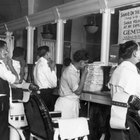
Men's Fashion of the 1930s

How to Preserve Leather Boots
References
Writer Bio
Tom Pace has been writing since 2000. His work has been featured by websites such as I-Mockery and his first book was published by Virtual Bookworm in 2005. Pace has been trained to coach students preparing for the GRE. He is pursuing a Bachelor of Arts in religious studies at the University of Chicago.
Photo Credits
Hemera Technologies/PhotoObjects.net/Getty Images